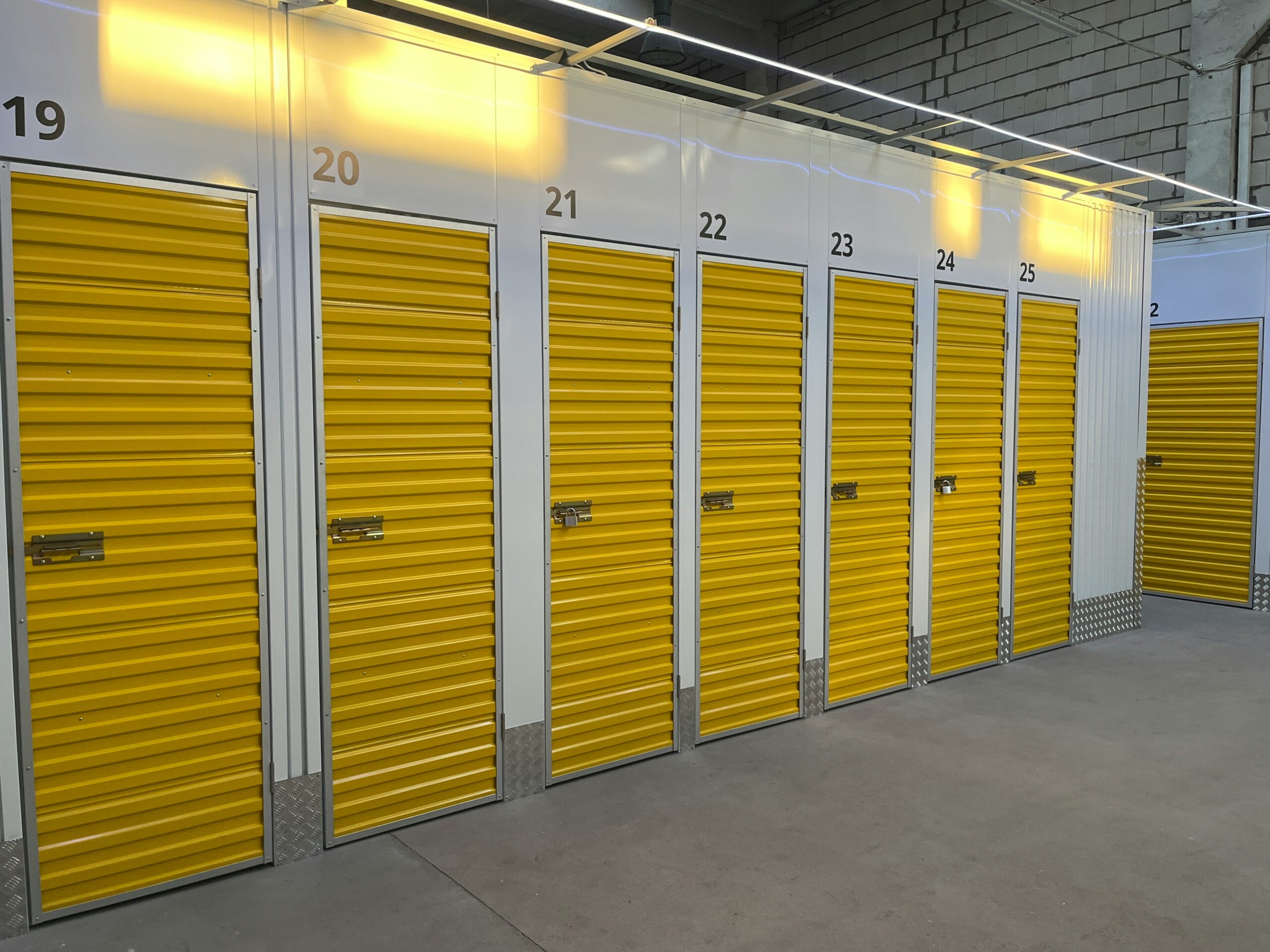Investing in Storage Units: A Guide for Beginners
Investing in storage units might not be the first thing that pops into your head when you think about real estate, but it’s quietly becoming a favorite for savvy investors. There’s a certain charm to owning a business where people stash their extra stuff—from holiday decorations to vintage collectibles.
Picture this: a steady cash flow from spaces people always seem to need, wrapped in a relatively low-maintenance package. If you’ve ever wondered why storage units are the behind-the-scenes superheroes of passive income, you’re in the right place to get the scoop.
Key Takeaways
-
Investing in storage units offers steady and often recession-resistant income
-
Location and property management are crucial for success
-
Storage units require less oversight than traditional rentals
-
Understanding market demand and saturation is key
-
Self-storage is a low-barrier entry into real estate investing
Don’t Miss Any Updates. Each week I’ll send you advice on how to reach financial independence with passive income from real estate.
Sign up for my newsletterWhy Storage Units?
The self-storage industry has seen significant growth in the United States. With high demand from both residential and commercial tenants, self-storage facilities have emerged as a powerful asset class in real estate investing.
Think about the last time you needed to declutter or store something temporarily—there’s a good chance you rented a unit nearby. These units solve real problems, and that reliability translates into consistent rental income.
Self-storage businesses also offer a break from the tenant management headaches often found in residential real estate. There are fewer moving parts, less legal red tape, and more operational efficiency.
The Resilience Factor
Self-storage units tend to weather economic downturns better than many other real estate properties. In times of job loss, downsizing, or relocation, people still need space. In fact, economic conditions like recessions often increase storage demand.
This recession-resistant nature makes self-storage investments an ideal buffer for any real estate investor’s portfolio. Occupancy rates remain high even when traditional rental properties see vacancies.
Low Maintenance, High Reward
One of the biggest advantages of investing in self-storage units is their low maintenance cost. Unlike residential or commercial buildings that require constant upkeep, storage spaces are simpler.
Most units are made with durable materials and require only occasional repairs. Plus, the business can be largely automated—think gate codes, online billing, and digital lease agreements. This results in lower operational costs and a higher profit margin for storage unit owners.
Accessible Entry Point
Storage unit investments are one of the few real estate asset classes that offer scalability and flexibility. Investors can start small by purchasing a few units or dive in with a full-size facility.
Self-storage facilities vary in size—from a few thousand square feet to over 100,000 square feet—and can be found in urban areas, suburbs, and rural markets. With SBA loans, bank loans, or even conventional loans, investors can secure financing and start earning passive income without breaking the bank.
Market Dynamics and Location Strategy
Self-storage facilities live or die by their location. Population growth, urban density, and limited housing space all drive demand for storage solutions.
Ideal facilities are often near highways, residential areas, or commercial zones with high foot traffic—but not so close that real estate prices become unaffordable. The sweet spot is a prime location with low overhead costs.
Demand Drivers
The target market for self-storage units is diverse:
-
Students need temporary storage during school breaks
-
Young professionals relocate frequently
-
Growing families run out of space
-
Small businesses use units for inventory or equipment
Understanding these groups can help you tailor your facility offerings and marketing strategies to maximize occupancy.
Join the Passive Investors CircleCompetition and Market Saturation
While the self-storage market continues to grow, some areas are at risk of market saturation. Oversupply drives down rental rates and increases customer turnover.
Market research and local economic indicators are essential before making any investment decisions. Analyze the number of existing facilities, current occupancy rates, and population trends in the area.
Financials and ROI
Initial Investment and Costs
Initial costs depend on whether you’re buying an existing facility or developing a new one. Key expenses include:
-
Purchase price or land acquisition
-
Permits and zoning
-
Security systems
-
Staffing or automation tools
Facilities that offer drive-up units, 24/7 access, and climate control may cost more to develop—but they also command higher rental rates.
Revenue Streams
Rental income is the primary revenue stream, but there are many ways to boost profits:
-
Climate-controlled units
-
Late fees
-
Packing supplies
-
Insurance upsells
-
Business storage packages
These additional revenue streams help maximize the return on your investment.
ROI Expectations
Cap rates for self-storage typically range from 6–12%, depending on the market and quality of the facility. With low overhead and high occupancy, self-storage offers one of the most consistent income sources in real estate.
As part of a well-diversified investment portfolio, self-storage investments provide long-term value and stable returns.
Tax Benefits and Depreciation
Like other real estate investments, storage units qualify for depreciation and other tax benefits. You can deduct:
-
Maintenance costs
-
Insurance
-
Interest on bank loans
-
Property management expenses
A cost segregation study can accelerate depreciation and improve short-term cash flow. Work with a financial advisor or CPA to ensure you take full advantage of these benefits.
Operational Considerations
Automation and Technology
Modern self-storage businesses rely heavily on automation. With fewer staff required, owners can reduce payroll expenses while improving the customer experience.
Common tech tools include:
-
Online reservations and payment systems
-
Automated gate access
-
Mobile apps for customers
-
Remote surveillance and smart security systems
Security and Maintenance
Effective management starts with safety. Customers trust you with their belongings, so your facility needs to be secure and well-maintained.
Install security cameras, LED lighting, keypad entry, and fencing to prevent theft or damage. Drive-up units and wide aisles enhance accessibility and reduce wear-and-tear on infrastructure.
Customer Service and Retention
Offering excellent customer service is a competitive advantage in the self-storage sector. Retention comes from clear communication, flexible rental terms, and quick issue resolution.
Happy tenants become long-term tenants—and that’s the foundation of steady income and operational efficiency.
Don’t Miss Any Updates. Each week I’ll send you advice on how to reach financial independence with passive income from real estate.
Sign up for my newsletterRisks and Challenges
Local Regulations and Zoning
Before buying or developing a facility, research local zoning laws, building codes, and neighborhood restrictions. Not all properties are zoned for self-storage use.
Working with local officials, real estate attorneys, and zoning consultants can save you time and money.
Market Fluctuations
Even recession-resistant assets experience cycles. A sudden economic slowdown or flood of new competitors can impact your bottom line. Monitor your local self-storage market and stay flexible with your business strategy.
Vacancy and Late Payments
Vacancies and delinquent payments can hurt cash flow. Use technology to automate reminders and enforce lease terms. Offer discounts for early payments or referrals to keep occupancy high.
Property Damage and Liability
Vandalism and weather-related damage are risks, especially in outdoor facilities. Make sure you have appropriate insurance coverage, enforce good lease agreements, and inspect your property regularly to catch issues early.
Is Storage Unit Investing Right for You?
Investing in storage units may not have the glamor of luxury condos or apartment buildings, but it offers something better—stability, simplicity, and steady cash flow.
With multiple ways to get started, self-storage investing can work for both beginners and experienced investors. From REITs to full ownership, it’s a flexible, scalable model with potential for significant growth.
Whether you’re looking to build passive income, diversify your investment portfolio, or take advantage of tax breaks, self-storage is one of the most attractive opportunities in real estate today.
By focusing on prime location, low operating costs, effective management, and market demand, you can tap into a long-term investment strategy that performs well in nearly any economic climate.



